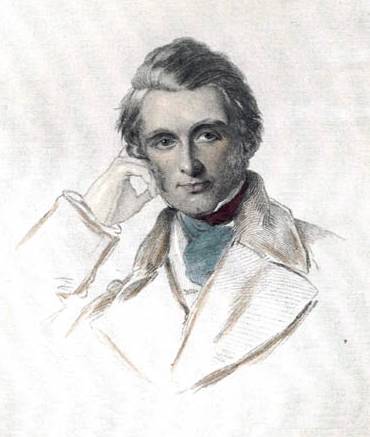I was not, therefore, at a loss to find out what Dante meant by the word; but I was at a loss to account for his not, as it seemed, acknowledging the existence of the colour of brown at all; for if he called dark neutral tint “brown,” it remained a question what term he would use for things of the colour of burnt umber. But one day, just when I was puzzling myself about this, I happened to be sitting by one of our best living modern colourists, watching him at his work, when he said, suddenly, and by mere accident, after we had been talking of other things, “Do you know I have found that there is no brown in Nature? What we call brown is always a variety either of orange or purple. It never can be represented by umber, unless altered by contrast.”
It is curious how far the significance of this remark extends, how exquisitely it illustrates and confirms the mediæval sense of hue;—how far, on the other hand, it cuts into the heart of the old umber idolatries of Sir George Beaumont and his colleagues, the “where do you put your brown tree” system; the code of Cremona-violin-coloured foregrounds, of brown varnish and asphaltum; and all the old night-owl science, which, like Young’s pencil of sorrow,
“In melancholy dipped, embrowns the whole.”
Nay, I do Young an injustice by associating his words with the asphalt schools; for his eye for colour was true, and like Dante’s; and I doubt not that he means dark grey, as Byron purple-grey in that night piece of the Siege of Corinth, beginning
“’Tis midnight; on the mountains brown
The cold, round moon looks deeply down;”
and, by the way, Byron’s best piece of evening colour farther certifies the hues of Dante’s twilight,—it
“Dies like the dolphin, . . . as it gasps away;
The last still loveliest; till—’tis gone—and all is grey.”
Let not, however, the reader confuse the use of brown, as an expression of a natural tint, with its use as a means of getting other tints. Brown is often an admirable ground, just because it is the only tint which is not to be in the finished picture, and because it is the best basis of many silver greys and purples utterly opposite to it in their nature. But there is infinite difference between laying a brown ground as a representation of shadow,—and as a base for light: and also an infinite difference between using brown shadows, associated with coloured lights—always the characteristic of false schools of colour,—and using brown as a warm neutral tint for general study. I shall have to pursue this subject farther hereafter, in noticing how brown is used by great colourists in their studies, not as colour, but as the pleasantest negation of colour, possessing more transparency than black, and having more pleasant and sunlike warmth. Hence Turner, in his early studies, used blue for distant neutral tint, and brown for foreground neutral tint; while, as he advanced in colour science, he gradually introduced, in the place of brown, strange purples, altogether peculiar to himself, founded, apparently, on Indian red and vermilion, and passing into various tones of russet and orange.
(Modern Painters vol III, Part IV, Chapter XV) 